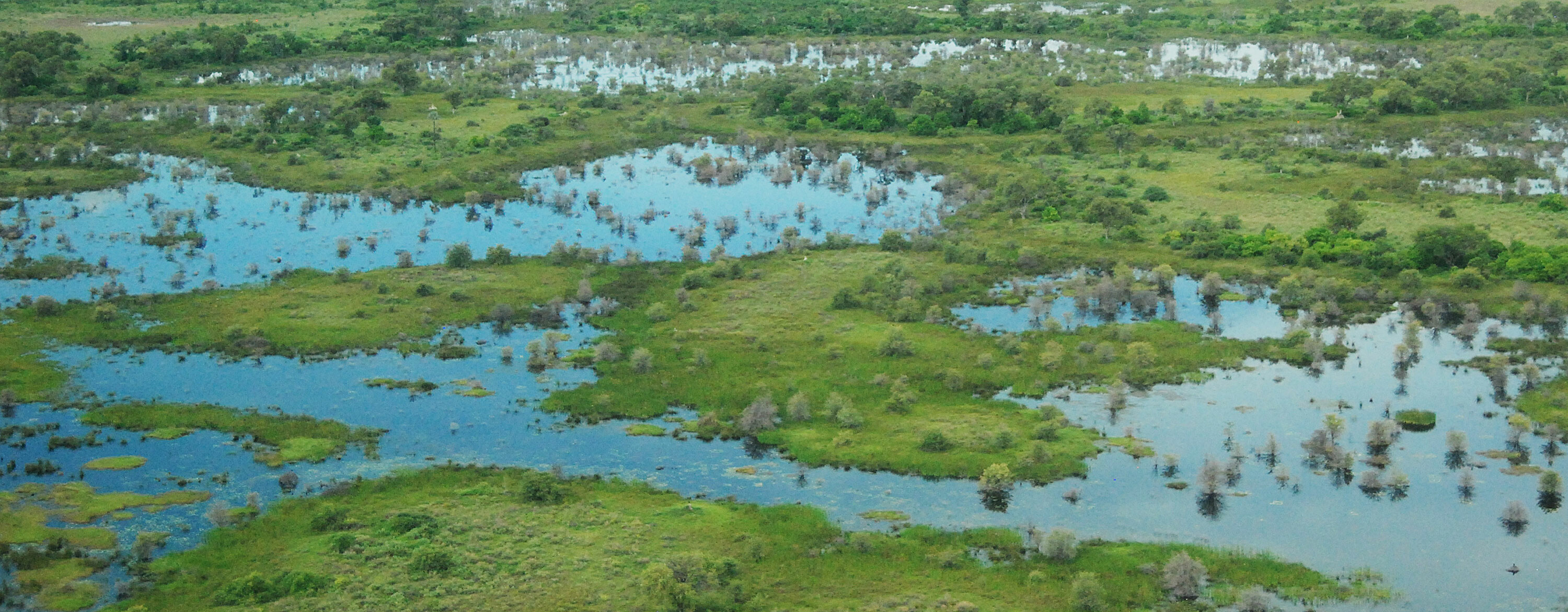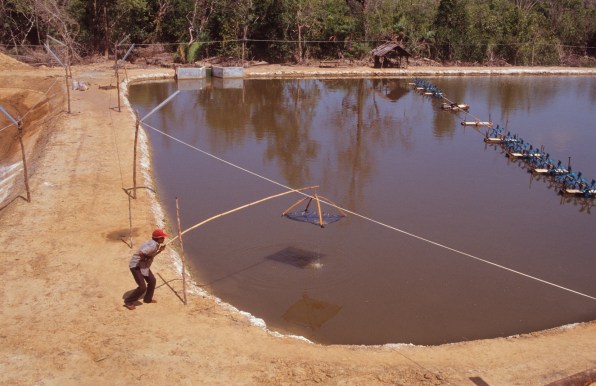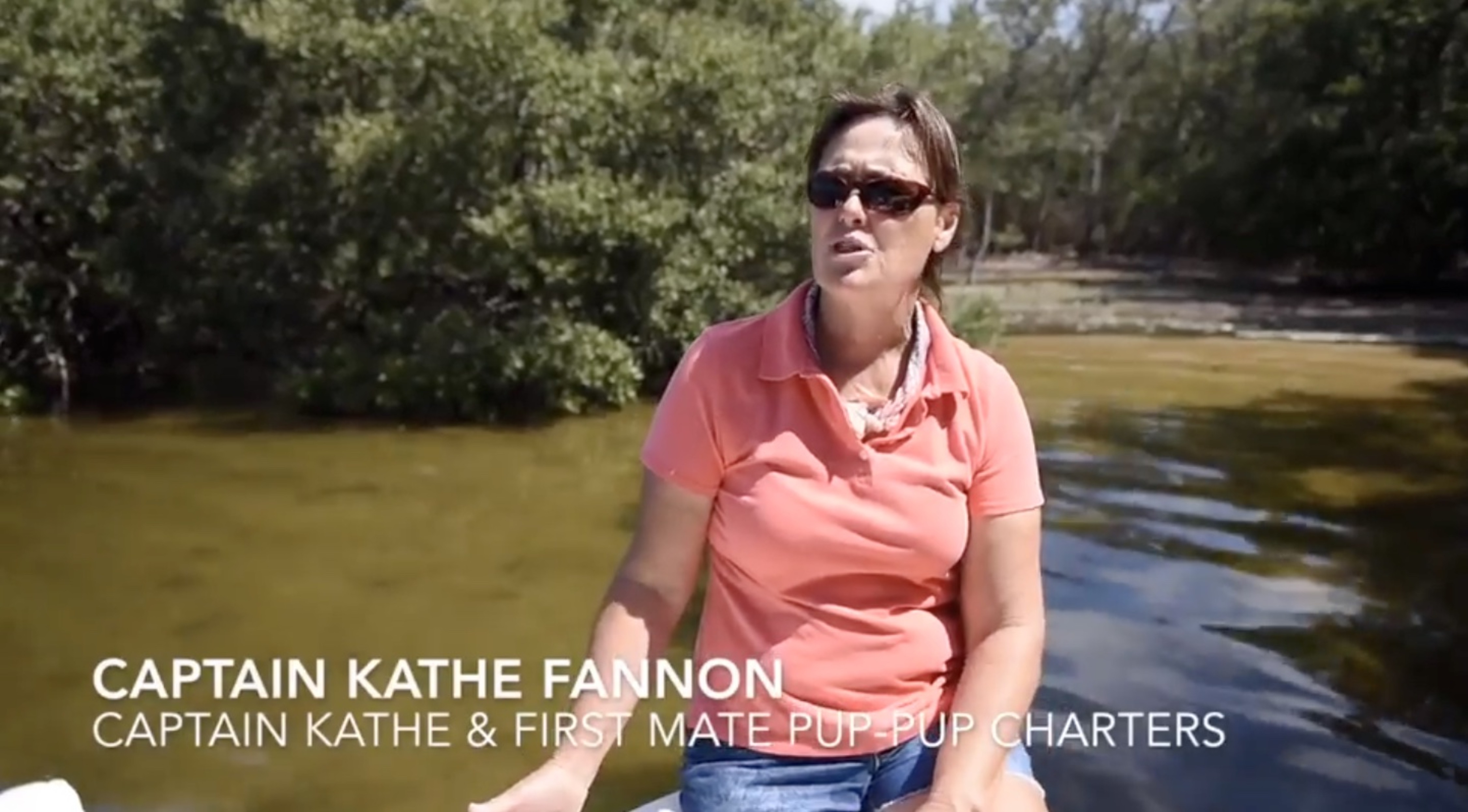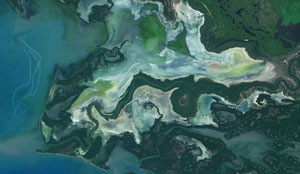MAP Issue #563 – Jan 14, 2023
The MAP News | |
FEATURE STORY The struggle to save the last mermaids of Africa /cloudfront-eu-central-1.images.arcpublishing.com/prisa/IBCPQVJXMNEBDM4U2C2CEDU3UE.jpg) SENEGAL – “We, the Diola, cannot catch them. It is forbidden. To catch one you must have mystical powers,” says Louis Diatta, sitting on the banks of the Casamance River, scanning the surface of the water and talking about the West African manatees as if they were people. “They are like us,” he says. “The females have breasts and suckle their babies. They move as a family. Instead of arms and legs, they have fins, but when you look into their eyes, you get a surprise. It’s as if they were half human.” The Pointe de Saint George is one of the few places in Senegal where you can observe West African manatees, an endangered species shrouded in mystery. If you’re lucky, that is, because, like all legendary beings, they are shy and elusive. The road to this place is as magical as the manatees themselves. A nine-kilometer path that links this village to the rest of the world takes you through huge flamboyant trees and baobabs, rice fields and mangroves. SENEGAL – “We, the Diola, cannot catch them. It is forbidden. To catch one you must have mystical powers,” says Louis Diatta, sitting on the banks of the Casamance River, scanning the surface of the water and talking about the West African manatees as if they were people. “They are like us,” he says. “The females have breasts and suckle their babies. They move as a family. Instead of arms and legs, they have fins, but when you look into their eyes, you get a surprise. It’s as if they were half human.” The Pointe de Saint George is one of the few places in Senegal where you can observe West African manatees, an endangered species shrouded in mystery. If you’re lucky, that is, because, like all legendary beings, they are shy and elusive. The road to this place is as magical as the manatees themselves. A nine-kilometer path that links this village to the rest of the world takes you through huge flamboyant trees and baobabs, rice fields and mangroves.GLOBALYou don’t want to know where your shrimp comes from
AFRICAFirst study to estimate ‘blue carbon’ storage in South Africa is useful for climate strategy
AMERICASFlorida reverses course, fines Aqua development’s mangrove trimming on Sarasota Bay
SEE RELATED ARTICLE – Reel Time: Stand up for mangroves Indigenous community in southern Mexico revives mangroves ASIAVital Northern Mangroves Need Uncompromising Protection Indonesia’s ‘essential’ mangroves, seagrass and corals remain unprotected Mangrove Clearance Halt Progress On Virar-Dahanu Railway Line  INDIA – The Mumbai Railway Vikas Corporation (MRVC) has hit a roadblock as its plan of enhancing the railway line capacity between Virar and Dahanu on the western line has been stagnated. The project was initially approved in February 2022; however, the Bombay High Court is yet to approve the project’s clearing of 24.5 hectares of mangroves in the Palghar district. The Regional Empowered Committee (REC) of the Ministry of Environment, Forests and Climate Change has given permission to MRVC to start construction on the railway line’s sections that are not within protected mangrove patches, although Stage II’s final approval is still pending. The project will result in the removal of roughly 25 thousand trees, about 24 thousand of which would be mangroves, therefore the improvement will come at a price to the ecosystem. On 54 hectares of degraded land in three surrounding villages in Palghar itself, compensatory afforestation will be recommended in order to lessen the effects of the loss of such natural resources. INDIA – The Mumbai Railway Vikas Corporation (MRVC) has hit a roadblock as its plan of enhancing the railway line capacity between Virar and Dahanu on the western line has been stagnated. The project was initially approved in February 2022; however, the Bombay High Court is yet to approve the project’s clearing of 24.5 hectares of mangroves in the Palghar district. The Regional Empowered Committee (REC) of the Ministry of Environment, Forests and Climate Change has given permission to MRVC to start construction on the railway line’s sections that are not within protected mangrove patches, although Stage II’s final approval is still pending. The project will result in the removal of roughly 25 thousand trees, about 24 thousand of which would be mangroves, therefore the improvement will come at a price to the ecosystem. On 54 hectares of degraded land in three surrounding villages in Palghar itself, compensatory afforestation will be recommended in order to lessen the effects of the loss of such natural resources.
Did Humans Arrive in Micronesia Much Earlier Than We Thought?  MICRONESIA – Sea levels in Micronesia rose much faster over the past 5,000 years than previously thought, according to a new study published recently in Proceedings of the National Academy of Sciences. This sea level rise is shown by the accumulation of mangrove sediments on the islands of Pohnpei and Kosrae. The finding may change how we think about when people migrated into Remote Oceania, and where they might have voyaged from. The Study looks at the published ages of settlement across the western part of Remote Oceania and found that high islands tend to show earlier ages of settlement compared to atolls, which is what we would expect. But we don’t see this pattern in Micronesia: The high islands of Pohnpei and Kosrae show settlement ages about 1,000 years later than other similar islands. Why? Deep within the mangrove forests of Pohnpei and Kosrae, previous researchers found mangrove sediments up to five meters (16.4 feet) deep. The only explanation for such deep mangrove sediments is sustained sea level rise. Mangroves live at the coast, between low tide and high tide. Therefore, as sea level rises, organic carbon and sediments accumulate beneath the mangrove forests, creating deep soils. MICRONESIA – Sea levels in Micronesia rose much faster over the past 5,000 years than previously thought, according to a new study published recently in Proceedings of the National Academy of Sciences. This sea level rise is shown by the accumulation of mangrove sediments on the islands of Pohnpei and Kosrae. The finding may change how we think about when people migrated into Remote Oceania, and where they might have voyaged from. The Study looks at the published ages of settlement across the western part of Remote Oceania and found that high islands tend to show earlier ages of settlement compared to atolls, which is what we would expect. But we don’t see this pattern in Micronesia: The high islands of Pohnpei and Kosrae show settlement ages about 1,000 years later than other similar islands. Why? Deep within the mangrove forests of Pohnpei and Kosrae, previous researchers found mangrove sediments up to five meters (16.4 feet) deep. The only explanation for such deep mangrove sediments is sustained sea level rise. Mangroves live at the coast, between low tide and high tide. Therefore, as sea level rises, organic carbon and sediments accumulate beneath the mangrove forests, creating deep soils.
Pease consider donating to MAP to keep it going. *Articles in this newsletter may mention practices being used and/or show exagerated results being claimed without proof. Stories are presented here in effort to show mangrove related activity around the world and do not necessarily reflect Mangrove Action Project’s views or mangrove restoration best-practices. NOTICEChildrens Art Calendars 2023 ORDER YOURS HERE
ACTION ALERTSDON’T LET THE PACIFIC ISLANDS SINK!Climate change is drowning the Pacific Islands. Join the urgent call from the Prime Minister of Tuvalu and sign with your email address: CLICK HERE Do not sacrifice Congo’s rainforests to the oil industry! TAKE ACTION TAKE MAP SURVEY Please see the survey questionnaire we at MAP put together to discover where the shrimp industry is still having major adverse effects on mangroves and local communities. Stop the Dredging – 6.7 million cubic meters of sand from the Addu atoll basin will destroy nature, biodiversity and the natural defences and resilience of this UNESCO Biosphere Reserve. SIGN THE PETITION Keep fossil fuels out of Bangladesh for the health and wellbeing of the local communities, the beautiful regional beaches and forests, the Bangladeshi economy, and our shared climate. SIGN PETITION Stop this total madness Stop the biggest heated oil pipeline in the world — right through the heart of Africa! Like this newsletter? Pease consider donating to MAP to keep it going. Giving could never be easier MAP Website en Español 13 Year old Linda Li “Mangrove Adventure” from Kid Dream Art School
Video: Mangroves for the Future WANT TO GET INVOLVED?
Like this newsletter? Pease consider donating to MAP to keep it going. Giving could never be easier
Interested in connecting or working with MAP? Check out our opportunities here MANGROVE ISSUES Want to learn more about mangroves? What is CBEMR? Download MAP’s 2 page CBEMR Information Sheet containing links to all MAP’s CBEMR resources – CLICK HERE View MAP’s uploaded Videos at Question Your Shrimp Consumer/Markets Campaign! Mangroves: Guidebook to Malaysia – Click Here SHARE MAP’S VISION Our short documentary, Reducing the Risk of Disaster through Nature-Based Solutions : Mangroves NASA Study Maps the Roots of Global Mangrove Loss Marvellous Mangroves Curriculum The Marvellous Mangroves Curriculum begins with a simple philosophy – getting future generations to not only learn about, but understand the importance of mangrove forests. VISIT Marvellous Mangroves Curriculum in Bangladesh – WATCH VIDEO
Like this newsletter? Pease consider donating to MAP to keep it going. Giving could never be easier *Articles in this newsletter may mention practices being used and/or show exagerated results being claimed without proof. Stories are presented here in effort to show mangrove related activity around the world and do not necessarily reflect Mangrove Action Project’s views or mangrove restoration best-practices. | |
Mangrove Action Project Click here to view past newsletters
| |

 GLOBAL – If you rang in the new year with some shrimp cocktail in hand, you weren’t alone. Shrimp is the most popular seafood among Americans, with industry groups reporting that we eat about five pounds of shrimp each year, per person. We hear a lot about the negative effects of industrial animal agriculture on our planet, not to mention the animal cruelty inherent in it— but these conversations are almost invariably focused on land animals raised as livestock, particularly cows and chickens. If seafood seems to have an eco-friendly halo by contrast, that’s probably more due to our own educational blind spots than any true environmental superiority. Despite their small size, shrimp carry some major ethical baggage that includes the destruction of critical environmental features as well as horrific human rights abuses and chilling acts of animal cruelty.
GLOBAL – If you rang in the new year with some shrimp cocktail in hand, you weren’t alone. Shrimp is the most popular seafood among Americans, with industry groups reporting that we eat about five pounds of shrimp each year, per person. We hear a lot about the negative effects of industrial animal agriculture on our planet, not to mention the animal cruelty inherent in it— but these conversations are almost invariably focused on land animals raised as livestock, particularly cows and chickens. If seafood seems to have an eco-friendly halo by contrast, that’s probably more due to our own educational blind spots than any true environmental superiority. Despite their small size, shrimp carry some major ethical baggage that includes the destruction of critical environmental features as well as horrific human rights abuses and chilling acts of animal cruelty.
 USA – The owners of the Aqua by the Bay development in southwest Manatee County have been hit with an $8,500 fine for illegal mangrove trimming. In a Dec. 22 consent order obtained by the Bradenton Herald, state officials with the Florida Department of Environmental Protection said the fine served as punishment for improper mangrove pruning. The fine marks a reversal for FDEP officials, who wrote after an initial inspection last summer that, “the mangroves appeared to be healthy and trimmed within the permit limits,” and described the damage as “minor non-compliance.”The Herald previously reported on concerns raised by local environmental activists about the trimming, which appeared to cut mangroves beyond what is allowed by state law. The trimming also left dead branches in the water, which can fuel harmful algae blooms as they decompose.
USA – The owners of the Aqua by the Bay development in southwest Manatee County have been hit with an $8,500 fine for illegal mangrove trimming. In a Dec. 22 consent order obtained by the Bradenton Herald, state officials with the Florida Department of Environmental Protection said the fine served as punishment for improper mangrove pruning. The fine marks a reversal for FDEP officials, who wrote after an initial inspection last summer that, “the mangroves appeared to be healthy and trimmed within the permit limits,” and described the damage as “minor non-compliance.”The Herald previously reported on concerns raised by local environmental activists about the trimming, which appeared to cut mangroves beyond what is allowed by state law. The trimming also left dead branches in the water, which can fuel harmful algae blooms as they decompose. MEXICO – Members of an Ikoots indigenous community in the southern Mexican state of Oaxaca have embarked on a projects to restore the ravaged mangroves on the lake surrounding the village of San Mateo del Mar in hopes of mitigating the effects of climate change. Every evening at sundown, more than 70 women and men push carts loaded with soil and botoncillo (buttonwood) saplings down to the edge of the lake, which lies near the Gulf of Tehuantepec, for planting. The Ikoots are using the ancient Mesoamerican technique of “chinampas,” artificial islands created by interweaving reeds with stakes beneath the lake’s surface. The “floating gardens” of the Aztec capital of Tenochtitlan that made such an impression on the conquistadors are the best known examples of the practice. Doña Albertina Flores, a 45-year-old fisherwoman who works on the project along with her two children, takes a moment to tell EFE that restoring the mangroves will encourage the return of fish and shrimp, which were once plentiful in the lagoon. In many cases, she said, it was necessity that drove residents to chop down the mangroves. “But right now we are planting to help those little ones who are coming along,” Flores said.
MEXICO – Members of an Ikoots indigenous community in the southern Mexican state of Oaxaca have embarked on a projects to restore the ravaged mangroves on the lake surrounding the village of San Mateo del Mar in hopes of mitigating the effects of climate change. Every evening at sundown, more than 70 women and men push carts loaded with soil and botoncillo (buttonwood) saplings down to the edge of the lake, which lies near the Gulf of Tehuantepec, for planting. The Ikoots are using the ancient Mesoamerican technique of “chinampas,” artificial islands created by interweaving reeds with stakes beneath the lake’s surface. The “floating gardens” of the Aztec capital of Tenochtitlan that made such an impression on the conquistadors are the best known examples of the practice. Doña Albertina Flores, a 45-year-old fisherwoman who works on the project along with her two children, takes a moment to tell EFE that restoring the mangroves will encourage the return of fish and shrimp, which were once plentiful in the lagoon. In many cases, she said, it was necessity that drove residents to chop down the mangroves. “But right now we are planting to help those little ones who are coming along,” Flores said. SRI LANKA – On the northern coast of Sri Lanka in the Mannar District is a place of extraordinary importance to conservation and to the economic wellbeing of the human populations who have lived off its bounty for centuries. Vidattaltivu (Wedithalathive) is an amazing complex of interconnected ecosystems; it drives every activity there and beyond. The ecosystems of Vidattaltivu – sea grasses, mangroves, mud flats and salt marshes – are all vital for the diversity of the species they support. In 2009, at the end of the civil war, a Northern Strategic Environmental Assessment was inaugurated that looked at all the sensitive areas that had now been opened in the North. After five years of study, a comprehensive report was published that concluded due to its importance to biodiversity and people, Vidattaltivu be designated as a Protected Area. In 2016, it was declared a Nature Reserve by Extraordinary Gazette (No. 1956/13). Yet just one year later, in 2017, a joint paper was presented to the cabinet by the Ministry of Wildlife and Ministry of Forests to de-gazette Vidattaltivu.
SRI LANKA – On the northern coast of Sri Lanka in the Mannar District is a place of extraordinary importance to conservation and to the economic wellbeing of the human populations who have lived off its bounty for centuries. Vidattaltivu (Wedithalathive) is an amazing complex of interconnected ecosystems; it drives every activity there and beyond. The ecosystems of Vidattaltivu – sea grasses, mangroves, mud flats and salt marshes – are all vital for the diversity of the species they support. In 2009, at the end of the civil war, a Northern Strategic Environmental Assessment was inaugurated that looked at all the sensitive areas that had now been opened in the North. After five years of study, a comprehensive report was published that concluded due to its importance to biodiversity and people, Vidattaltivu be designated as a Protected Area. In 2016, it was declared a Nature Reserve by Extraordinary Gazette (No. 1956/13). Yet just one year later, in 2017, a joint paper was presented to the cabinet by the Ministry of Wildlife and Ministry of Forests to de-gazette Vidattaltivu. INDONESIA – Much of the mangroves, seagrass beds and coral reefs in Indonesia lie outside protected areas, which could thwart efforts at effective marine conservation, a new report shows. “These essential ecosystems, i.e. mangrove, seagrass, coral reef — the power of three, are known as ecosystems that function as habitat and protection for sea organisms, fish, including for nursery ground/reproduction,” Tezza Napitupulu, a former economics researcher at WRI Indonesia and lead author of the report published earlier this month. With the threat of the climate crisis, there’s been a growing appreciate of these ecosystems’ importance as barriers against ocean disasters and as stores of carbon dioxide, especially mangroves and seagrass, said Napitupulu, who is now a lecturer at the University of Indonesia’s School of Economics and Business. “We’re calling for more of these essential ecosystems to be included in the marine protected areas in the future,” said Arief Wijaya, WRI Indonesia’s program director and a co-author of the report.
INDONESIA – Much of the mangroves, seagrass beds and coral reefs in Indonesia lie outside protected areas, which could thwart efforts at effective marine conservation, a new report shows. “These essential ecosystems, i.e. mangrove, seagrass, coral reef — the power of three, are known as ecosystems that function as habitat and protection for sea organisms, fish, including for nursery ground/reproduction,” Tezza Napitupulu, a former economics researcher at WRI Indonesia and lead author of the report published earlier this month. With the threat of the climate crisis, there’s been a growing appreciate of these ecosystems’ importance as barriers against ocean disasters and as stores of carbon dioxide, especially mangroves and seagrass, said Napitupulu, who is now a lecturer at the University of Indonesia’s School of Economics and Business. “We’re calling for more of these essential ecosystems to be included in the marine protected areas in the future,” said Arief Wijaya, WRI Indonesia’s program director and a co-author of the report.














